Discover the secret to making creamy pecan pesto without pine nuts that is just as delicious as the traditional version. This recipe combines fresh basil, toasted pecans, garlic, and grated Parmesan cheese for an incredibly flavorful pesto sauce. It's smooth and vibrant, perfect for pasta, pizza, or sandwiches! Best of all, all you need is 10 minutes and a food processor to whip up this tasty sauce. Follow along with this simple step-by-step guide.

This delightful variation brings a rich, nutty flavor to your favorite dishes while still maintaining that velvety texture you've come to love.
In this blog post, we'll share our secret to creating the perfect pesto sauce without pine nuts, along with some helpful tips and tricks to ensure your sauce is nothing short of spectacular.
One of the reasons we adore pecan pesto is its versatility.
Pecan pesto caters to those with pine nut allergies, but it also offers an exciting change for those who want to experiment with new flavors.
Pecans bring a unique depth of taste to the mix, pairing beautifully with the bright notes of fresh basil and the sharpness of Parmesan cheese.
We're confident that once you try this pesto recipe with no pine nuts, you'll be hooked on this delicious twist on a classic.
So, let's dive in!
Ingredients
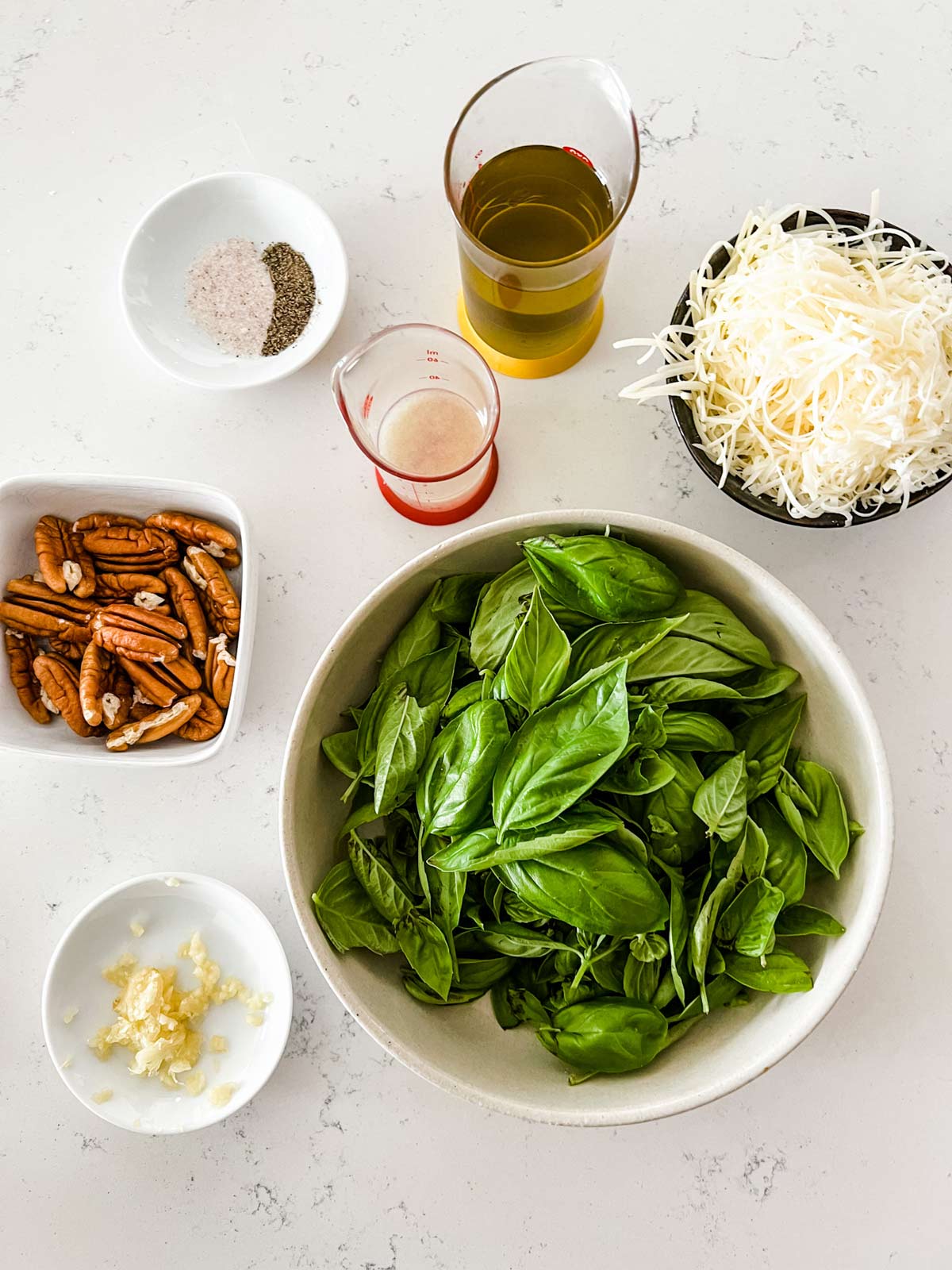
- Basil: Fresh basil is a must for this pecan pesto recipe! If you buy basil rather than grow it, store it in a cup of water at room temperature until you are ready to use it. The cold of a refrigerator will cause it to start to brown.
- Garlic: Feel free to add more or less, depending on how much garlic flavor you want in your pesto!
- Extra Virgin Olive Oil: The olive oil helps provide a creamy texture and adds flavor as well. Don't skimp on quality — this is the time to pull out the good stuff!
- Pecans: Toast and cool the pecans before adding them to the pesto mixture. Toasting brings out the natural nutty flavor of the nuts and gives a depth to your pesto that can't be found any other way!
- Parmesan Cheese: Parmesan cheese adds richness and sharpness to the pesto. If you want to keep the recipe vegetarian, make sure you use rennet-free parmesan. Pecorino romano and asiago may also be used.
- Lemon Juice: Fresh lemon juice brings out the flavors of all the other ingredients and ties them together. Make sure you use fresh lemon juice.
- Salt & Pepper: Don’t skip the seasonings!
Step by Step
For the full recipe with measurements, see the recipe card at the end of the post.
First, start by toasting the pecans. Preheat your oven to 350°F and place the pecans on a baking sheet.
Toast them for about 5 minutes, until they are lightly browned and fragrant. Let cool before adding to the food processor or blender.
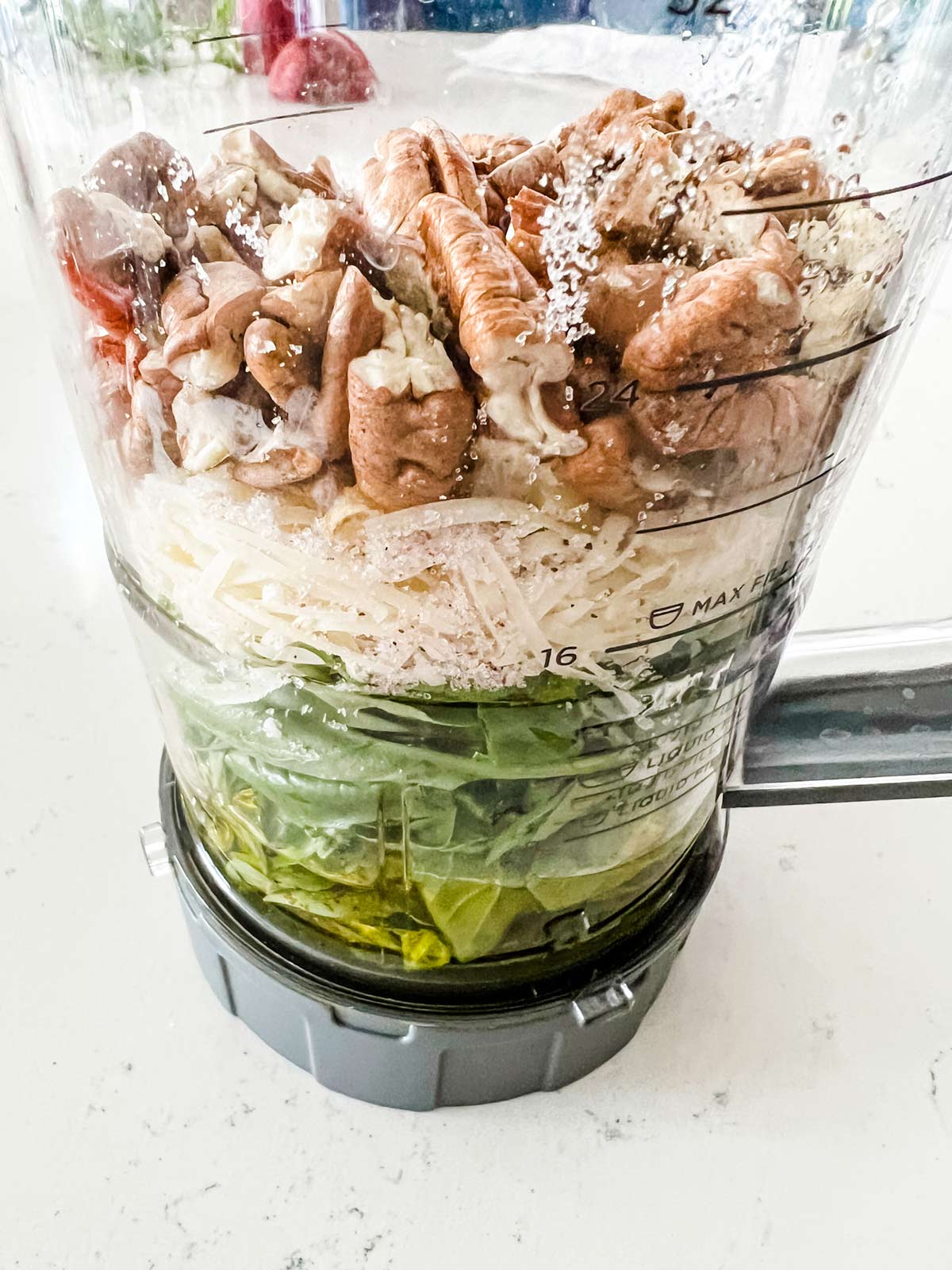
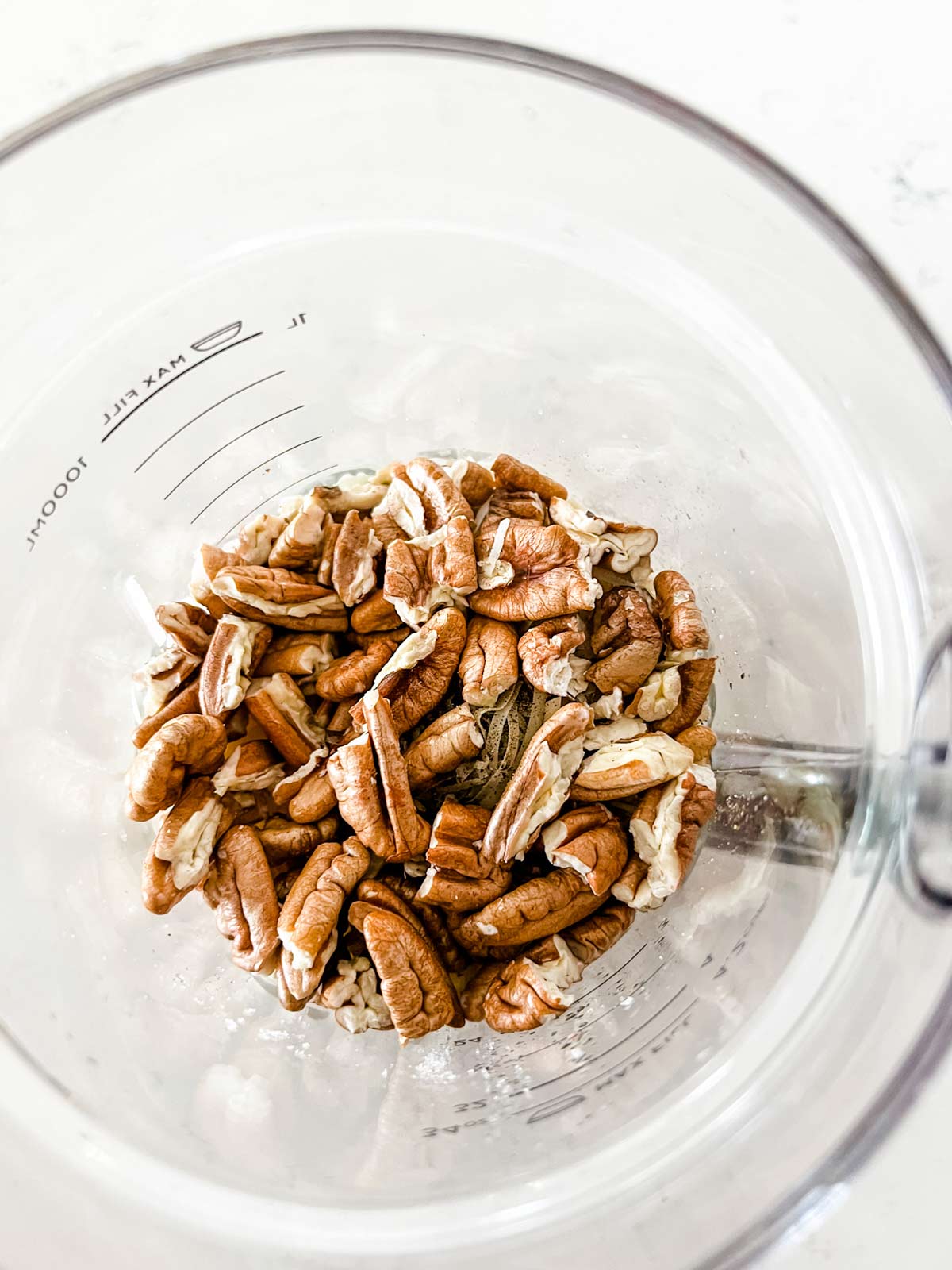
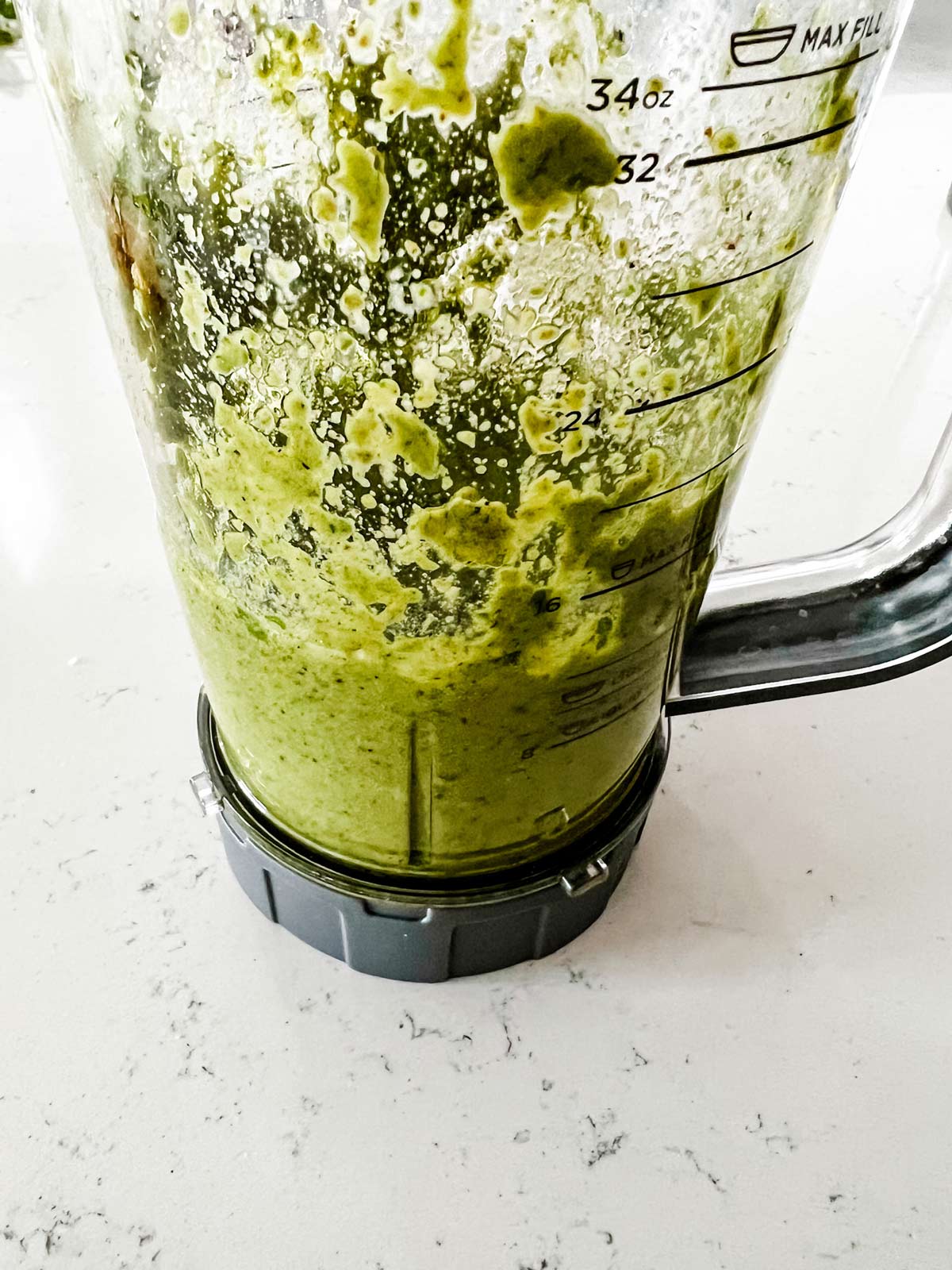
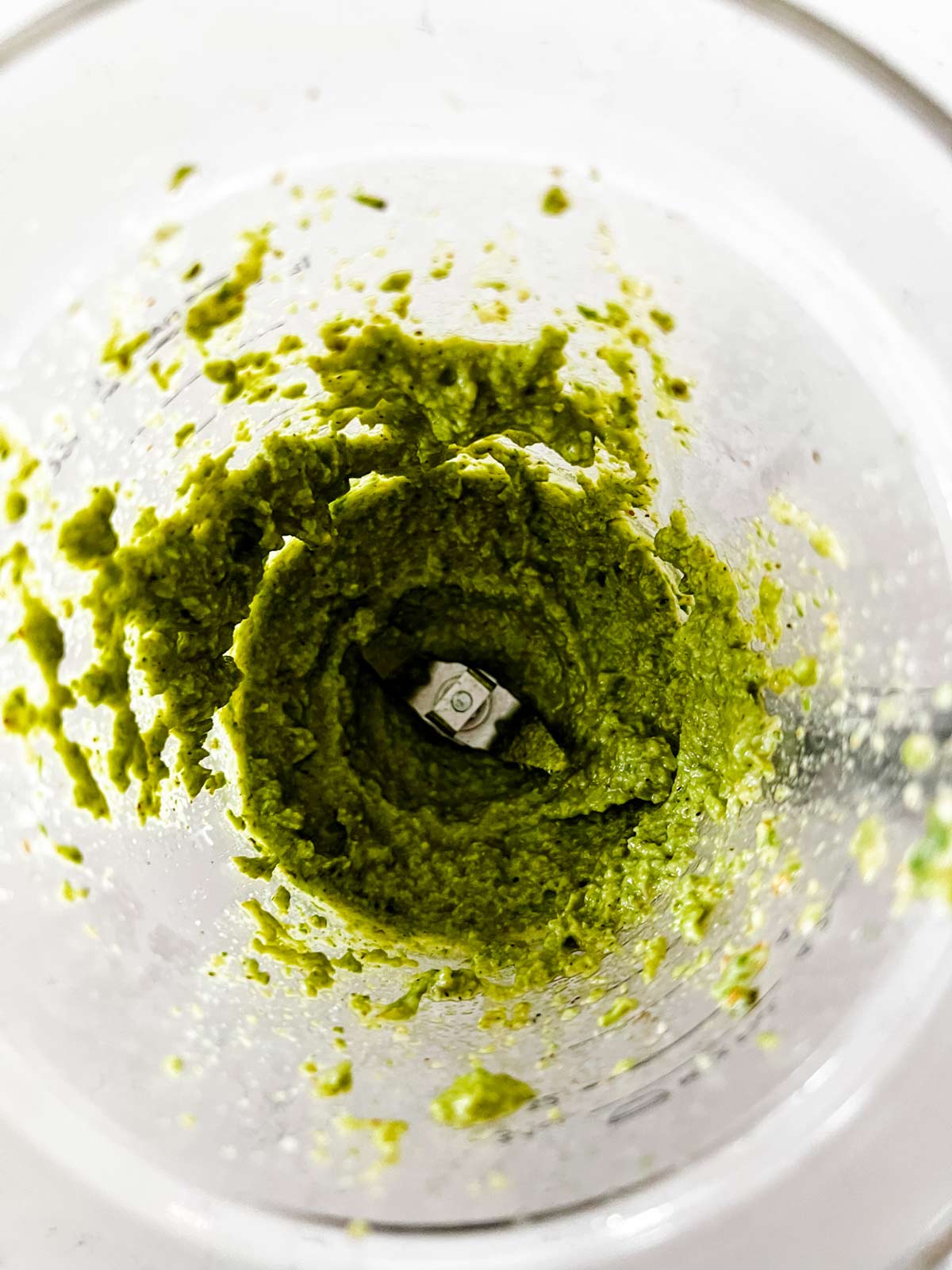
Tips and Tricks
- Fresh basil doesn't store well in the fridge, but it freezes beautifully in an oil emulision. If you are using frozen basil, thaw it and drain off any excess liquid before adding to the food processor.
- Toast the pecans in a dry skillet over medium heat for about 5 minutes, stirring occasionally until fragrant and lightly browned. Let cool completely
Using Pesto
Pesto is a fabulous way to elevate almost any meal. Use it to make a pesto sausage and rice skillet, Italian burgers, pesto panini, or pesto chicken wrap.
Or make a simple meal without a recipe! I like to add about ¾ cup of pesto to pasta and top it with additional parmesan or use it to top chicken.
Get creative, and you will be surprised at how homemade pesto elevates
Storage
Storing homemade pesto properly is essential to maintain its freshness, flavor, and vibrant green color.
To keep your pesto fresh, transfer it into an airtight container and cover the surface with a thin layer of olive oil to prevent oxidation. Store it in the refrigerator for up to a week, making sure the lid is tightly sealed.
Freezing
If you'd like to preserve your pesto for an extended period, consider freezing it. You can use ice cube trays to portion out individual servings, then transfer the frozen cubes into a freezer-safe bag or container. Freeze pesto cubes in freezer bags for up to three months.
This method allows you to easily thaw the exact amount of pesto you need for future meals, ensuring that your homemade pesto remains delicious and ready to use whenever you desire.
FAQs
Can I make pesto without a food processor?
While a food processor will make the smoothest pesto, never fear - you can make homemade pesto without a food processor.
A blender or immersion blender will work just fine. Your pesto may be a little chunkier if made with an immersion blender, but it will still taste great.
What can I use instead of pine nuts in pesto?
Pecans are a great alternative to pine nuts. They give the pesto a nutty flavor and crunchy texture that’s hard to beat! Other substitutes include macadamia nuts, pistachios, hazelnuts, almonds, and walnuts. For a nut-free option, try pumpkin seeds or sunflower seeds. Feel free to experiment with different nut combinations for your own unique twist on flavor!
Tools
As an amazon associate, I earn from qualifying sales.
You May Also Like
- For an easy dip that packs a punch of flavor, don't miss this whipped ricotta dip.
- Buttermilk blue cheese dressing is so flavorful that you'll want to add it to your meal prep rotation!
- Homemade BBQ seasoning is so easy to make and a great way to elevate meat and veggies.
- Vegan lime crema is a fun addition to taco Tuesday!
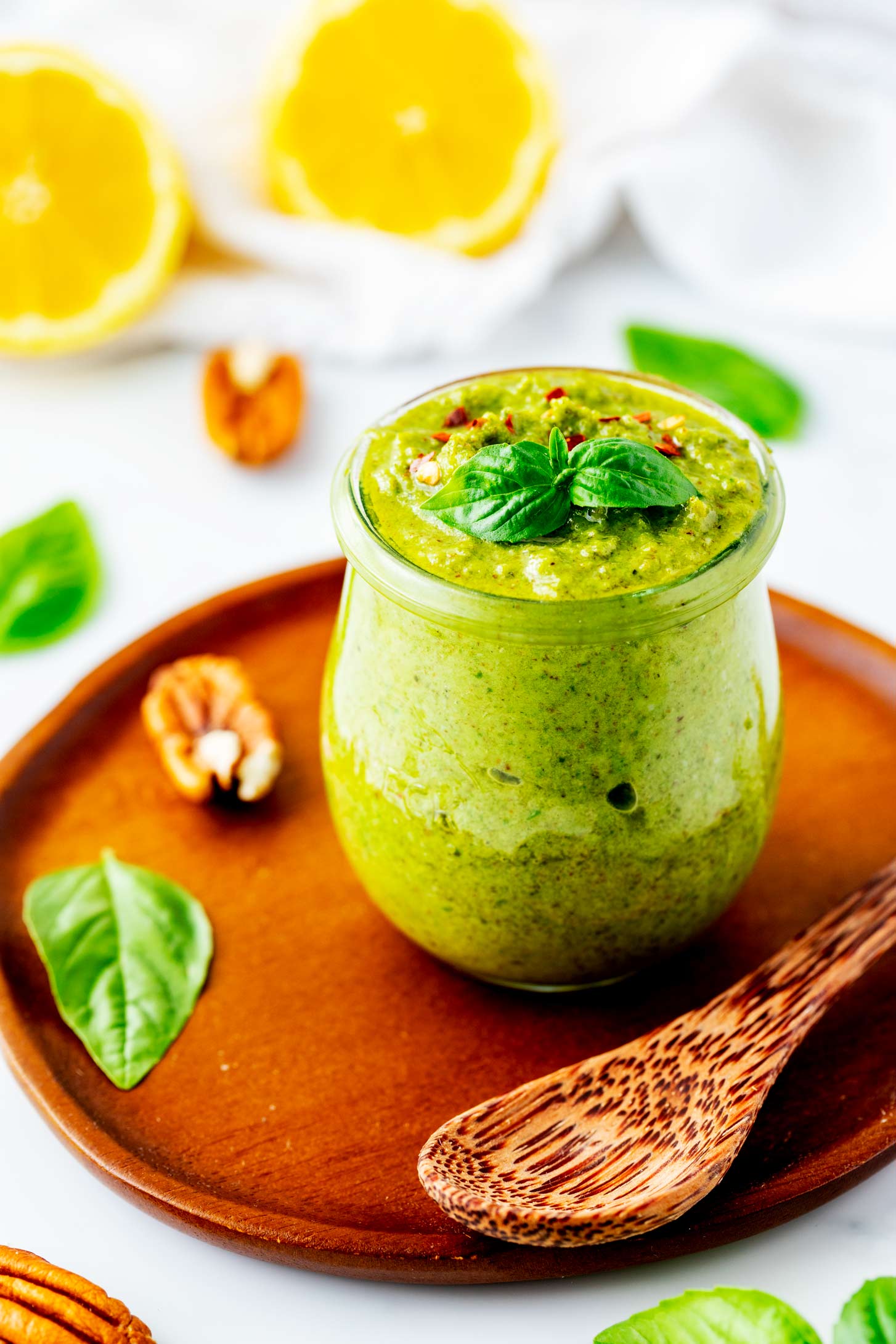
10-Minute Pecan Pesto without Pine Nuts
Equipment
- Blender or Food Processor
Ingredients
- 2 cups fresh basil
- 2 cloves garlic minced
- ½ cup extra virgin olive oil
- ½ cup pecans toasted and cooled
- 2 ounces Parmesan cheese shredded
- 2 tablespoons fresh lemon juice
- Salt and Pepper to taste
Instructions
- In a food processor or blender, combine basil, garlic, olive oil, pecans, Parmesan cheese, and lemon juice.
- Season to taste with salt and pepper.
- Process until smooth.
- Add water until the desired consistency is reached.







Leave a Comment & Rate this Recipe